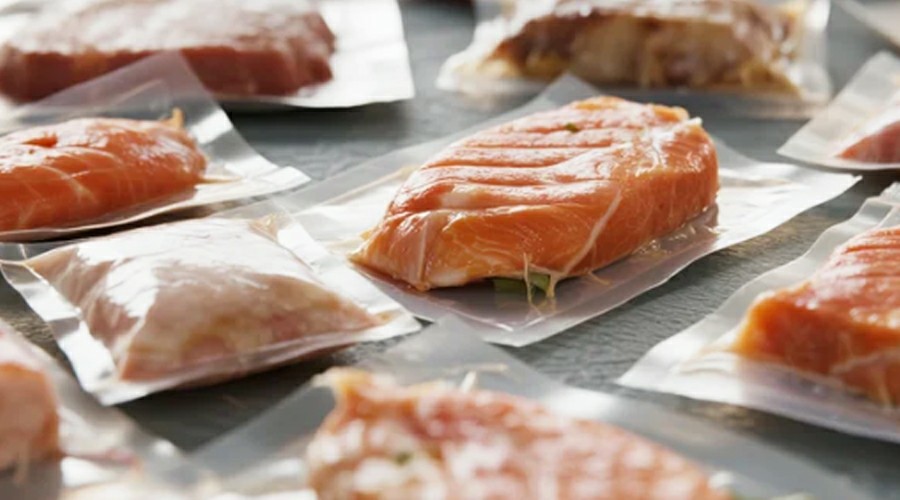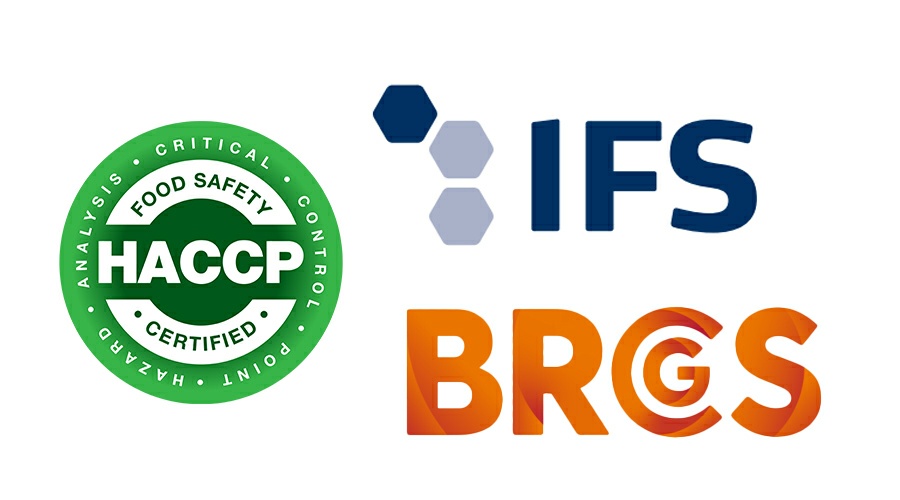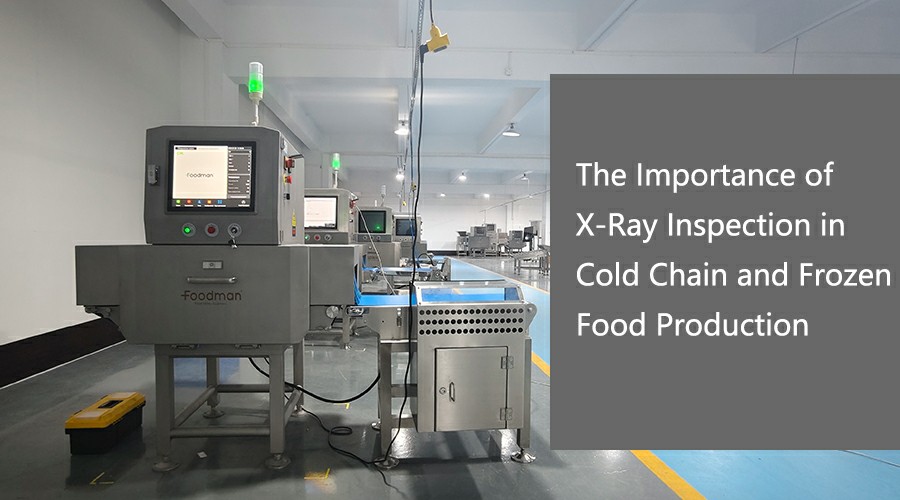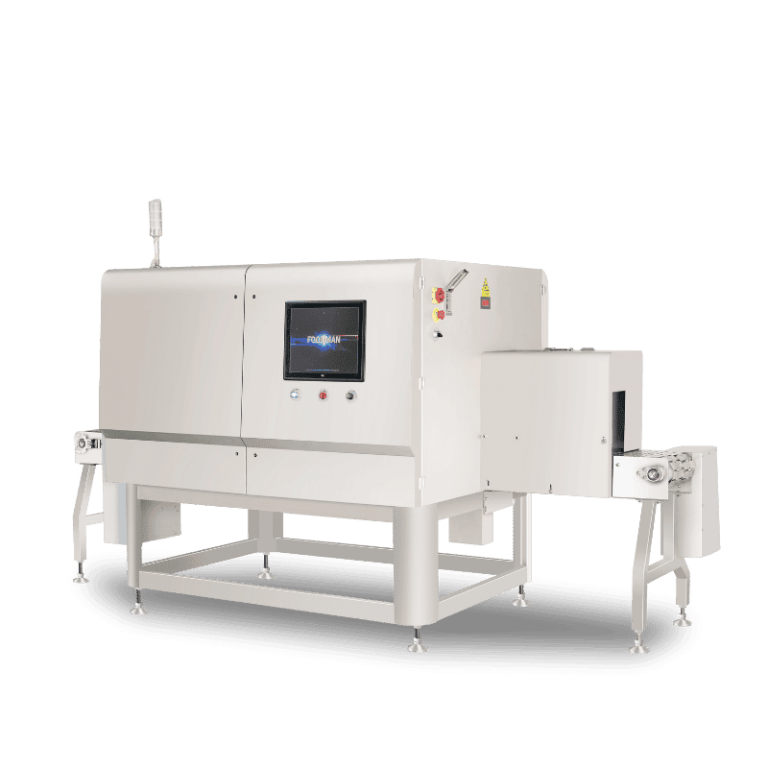Introduction
Rapid Growth of the Frozen Food Industry and Cold Chain Logistics
The global frozen food industry is expanding at an unprecedented pace, driven by shifting consumer preferences, increased urbanization, and rising demand for convenient, long-lasting food products. To meet this demand, cold chain logistics—responsible for preserving temperature-sensitive goods—have become more advanced and integrated. In this fast-moving landscape, maintaining product integrity is critical. That’s why X-Ray inspection, particularly in the form of advanced X-Ray inspection systems, plays a vital role in ensuring product safety and quality. Whether deployed as an inline X-Ray inspection machine or a standalone X-Ray inspection equipment unit, these technologies offer unmatched accuracy in detecting physical contaminants and structural inconsistencies. Today, food X-Ray inspection has become essential in frozen food production lines, helping manufacturers uphold safety standards while keeping up with global demand.

The Importance of Food Safety and Quality Assurance
Maintaining food safety and quality throughout the cold chain is not just a regulatory requirement—it’s a brand imperative. Temperature fluctuations, packaging failures, or contamination during processing can compromise the quality of frozen products, putting consumer health and brand reputation at risk. That’s why many manufacturers are turning to advanced X-Ray inspection systems to strengthen quality control. Whether it’s a compact X-Ray inspection machine integrated into the production line or a more robust X-Ray inspection equipment designed for high-volume environments, these solutions offer unparalleled precision and consistency. Food X-Ray inspection helps ensure contaminant-free products, reinforcing consumer trust and meeting stringent safety standards across cold chain operations. With the growing complexity of logistics and packaging, X-Ray inspection has become an indispensable part of modern quality assurance strategies.
X-Ray Inspection as a Key Solution
X-Ray inspection stands out as one of the most reliable technologies to address these challenges. Its ability to detect a wide range of foreign objects—such as metal, glass, bone, and plastic—even through thick or foil packaging, makes it indispensable for frozen food manufacturers. In addition to contaminant detection, modern X-Ray systems can assess shape, fill levels, and structural defects, providing an all-in-one solution for safety and quality control. For businesses operating in the cold chain sector, investing in robust X-Ray inspection capabilities is a forward-looking move toward smarter, safer, and more efficient production.
Challenges in Cold Chain and Frozen Food Production
Product State
Frozen products are often dense, compact, or irregularly shaped, which significantly increases the difficulty of contaminant detection. Traditional inspection methods may struggle to penetrate solid or uneven product masses. However, X-Ray inspection systems are specifically engineered to handle such challenges. Unlike optical or metal detection alone, a modern X-Ray inspection machine can accurately analyze variations in density—even in frozen or clumped products—ensuring that foreign objects are identified without compromising detection accuracy. For processors seeking to improve safety and precision, food X-Ray inspection offers a reliable path forward.
Packaging Materials
Many frozen foods are packaged using aluminum foil, multilayer films, or vacuum-sealed wraps—materials that can interfere with traditional metal detection and visual inspection methods. This is where X-Ray inspection equipment excels. These systems can see through complex packaging to detect a wide range of contaminants, regardless of the packaging material. Whether it’s an entry-level unit or a high-speed X-Ray inspection system, the technology ensures dependable inspection across diverse packaging formats, making it an ideal solution for frozen food production lines.
Environmental Conditions
Cold chain environments often involve low temperatures and high humidity, which can lead to condensation and affect the accuracy and reliability of inspection equipment. Moisture can fog lenses, corrode components, or impair sensor performance. Fortunately, X-Ray inspection machines designed for cold and wet conditions come equipped with sealed components, robust cooling and dehumidification systems, and anti-condensation features. These enhancements ensure that food X-Ray inspection remains consistent and effective, even in the most demanding cold chain settings.

Contamination Risks
Frozen food production is vulnerable to various foreign body risks, including metal fragments, glass shards, stones, dense plastics, and bones. These contaminants can enter the supply chain during processing, packaging, or transportation. A reliable X-Ray inspection system is capable of detecting these threats at multiple points along the line. By using advanced X-Ray inspection equipment, manufacturers can ensure that only safe, contaminant-free products reach consumers, thereby reducing recalls, safeguarding brand reputation, and meeting global food safety regulations.
How X-Ray Inspection Solves These Challenges
Detects Contaminants Based on Density Differences, Not Just Magnetic or Conductive Properties
Unlike traditional metal detectors that rely solely on magnetic or conductive properties, X-Ray inspection systems operate by identifying differences in material density. This allows X-Ray inspection equipment to detect a wide range of contaminants—including glass, bone, rubber, plastic, and stones—which might be invisible to conventional methods. In the context of frozen food production, where foreign bodies are often embedded within solid or irregular shapes, food X-Ray inspection offers unmatched reliability and performance.
Works Through All Types of Packaging – Including Foil, Metalized Films, and Thick Plastic
Many frozen foods are packaged in materials like aluminum foil, multilayer plastic, or vacuum-sealed pouches, which can obstruct traditional inspection methods. However, X-Ray inspection machines can effectively scan through these challenging packaging types without compromising detection accuracy. Whether using clear trays or foil-based wrappers, a modern X-Ray inspection system ensures that contaminants are identified regardless of the packaging format—making it essential for food manufacturers operating across diverse production lines.
Provides High-Resolution Imaging to Identify Even Small or Low-Density Foreign Bodies
Advanced X-Ray inspection equipment delivers high-resolution imaging that allows operators to identify even the smallest or least dense foreign particles. From tiny bone fragments in frozen fish fillets to shards of plastic in processed meals, food X-Ray inspection provides superior visibility and precision. This level of detail is critical in maintaining consumer safety, reducing product recalls, and complying with global food safety standards.
Tolerates Extreme Temperatures and Humidity Levels with Proper Sealing and Cooling Systems
Operating in cold storage or frozen food environments often involves extreme humidity and sub-zero temperatures. Modern X-Ray inspection machines are engineered to function reliably under these harsh conditions. With features like anti-condensation systems, sealed stainless-steel enclosures, and internal cooling technologies, these systems maintain stable performance and long-term durability. Whether installed in freezing chambers or near wet processing lines, food X-Ray inspection systems remain resilient and accurate.
Key Benefits of X-Ray Inspection in Frozen Food Production
Non-destructive Testing: Ensures Product Integrity Without Compromising Packaging
One of the major advantages of using X-Ray inspection systems in frozen food production is their non-destructive nature. Unlike some testing methods that require opening or damaging packaging, X-Ray inspection equipment can scan sealed products without altering or contaminating them. This ensures that the integrity of packaging remains intact while thoroughly verifying product safety—critical for maintaining freshness and shelf life in cold chain environments.
Wide Detection Range: Capable of Identifying Contaminants That Metal Detectors Might Miss
Food X-Ray inspection offers a significant edge over traditional metal detection by identifying a broader spectrum of foreign materials. The X-Ray inspection machine detects metal and non-metal contaminants alike—including glass shards, stones, bone fragments, and dense plastics—thereby providing comprehensive protection against contamination risks. This wide detection range is essential in frozen food processing, where varied types of contaminants can jeopardize product safety.
Real-Time Feedback: Enables Immediate Rejection of Faulty Products to Minimize Waste
Modern X-Ray inspection systems deliver real-time analysis and feedback during production. This instant detection allows for the immediate rejection or removal of contaminated or defective products, preventing them from advancing along the supply chain. Such rapid response minimizes waste, reduces costly recalls, and safeguards brand reputation by ensuring only safe, high-quality frozen foods reach consumers.
Supports Quality Control: Also Detects Missing Items, Broken Shapes, or Improper Sealing
Beyond contaminant detection, X-Ray inspection equipment plays a vital role in overall quality control. These systems can identify missing components in multi-piece products, broken or deformed items, and packaging defects such as improper sealing or fill-level inconsistencies. In frozen food production, where product consistency is key, food X-Ray inspection machines help manufacturers uphold strict quality standards and customer satisfaction.
Improves Compliance: Helps Meet International Food Safety Certifications (e.g., HACCP, BRCGS, IFS)
Compliance with global food safety standards is a must for frozen food producers targeting international markets. X-Ray inspection systems provide reliable and documented inspection records that support certification efforts such as HACCP, BRCGS, and IFS. By integrating advanced X-Ray inspection equipment into production lines, companies can demonstrate due diligence in contaminant control and quality assurance, thereby facilitating smoother audits and stronger market acceptance.

Real-World Applications and Use Cases
Frozen Seafood (e.g., shrimp, fish fillets with bones)
In the frozen seafood industry, X-Ray inspection systems are crucial for detecting foreign contaminants like small bones, metal fragments, or shell pieces that pose risks to consumers. The dense and irregular shapes of seafood products such as shrimp or fish fillets require advanced food X-Ray inspection machines capable of high-resolution imaging to identify these hazards without damaging the packaging. Using specialized X-Ray inspection equipment, producers ensure the safety and quality of their seafood products throughout the cold chain.
Prepared Frozen Meals (e.g., dumplings, meatballs, spring rolls)
Prepared frozen meals often contain multiple ingredients and complex fillings, which increases the risk of contamination or quality issues. X-Ray inspection machines effectively scan these products for foreign objects such as metal shards, stones, or bone fragments that traditional detection methods might miss. Additionally, the X-Ray inspection system can verify product consistency—checking for proper filling and shape integrity—to maintain high quality standards across batches.

Frozen Fruits and Vegetables with Stems, Stones, or Shells
Frozen fruits and vegetables often come with natural inclusions like stems, pits, or shells that can be mistaken for contaminants by simpler detection systems. Advanced X-Ray inspection equipment distinguishes between these natural elements and harmful foreign objects, ensuring accurate contaminant detection without false rejects. This precision in food X-Ray inspection is vital for maintaining both safety and consumer satisfaction in frozen produce.

Ice Cream Products with Embedded Ingredients (e.g., chocolate chips, nuts)
Ice cream and other frozen desserts frequently contain embedded ingredients such as chocolate chips, nuts, or fruit pieces that vary in density and size. The complexity of these products demands sophisticated X-Ray inspection machines that can penetrate packaging and differentiate between safe ingredients and potential contaminants. Employing state-of-the-art X-Ray inspection systems helps manufacturers uphold product quality and safety, even in challenging frozen confectionery applications.
Features to Look for in a Cold Chain X-Ray Inspection System
Waterproof and Dustproof Design (e.g., IP66 Rating)
Cold chain environments often expose X-Ray inspection equipment to moisture, dust, and other harsh conditions. Choosing an X-Ray inspection system with a waterproof and dustproof design—such as an IP66 rating—is essential to ensure reliable operation and long-term durability. This feature protects the X-Ray inspection machine from environmental damage, minimizing downtime and maintenance costs.
Condensation-Resistant Cooling Systems
Condensation caused by temperature fluctuations in cold storage can impair the performance of food X-Ray inspection machines. Advanced X-Ray inspection equipment incorporates condensation-resistant cooling systems that regulate internal temperatures and prevent moisture buildup. This capability ensures consistent image quality and system stability during continuous operation in cold and humid conditions.
Shielding and Image Filtering Options for Customized Detection Zones
To optimize contaminant detection in complex frozen food packaging, modern X-Ray inspection systems offer shielding and image filtering functionalities. These options allow operators to customize detection zones, focusing on critical areas while ignoring non-essential regions. Such precise control improves accuracy and reduces false rejects in food X-Ray inspection processes.
Integration with Production Lines for Automatic Rejection and Reporting
Efficient cold chain operations demand seamless integration of X-Ray inspection machines with automated production lines. Leading X-Ray inspection equipment features connectivity for automatic rejection of faulty products and real-time reporting. This integration enhances throughput and traceability, enabling manufacturers to maintain strict quality control without sacrificing efficiency.
Remote Monitoring and AI-Enhanced Algorithms for Improved Detection
Advanced X-Ray inspection systems are equipped with remote monitoring capabilities and AI-enhanced algorithms. These technologies allow operators to supervise food X-Ray inspection remotely, analyze data in real time, and improve contaminant detection accuracy through machine learning. The combination of remote access and intelligent analysis empowers cold chain producers to proactively address quality issues and optimize their inspection workflows.
The Future of X-Ray in Frozen Food Safety
Adoption of Deep Learning and AI Algorithms for Smarter Identification
As frozen food production becomes more complex, the need for smarter inspection technologies continues to grow. Modern X-Ray inspection systems are increasingly incorporating deep learning and AI algorithms to enhance detection accuracy and reduce false positives. These intelligent X-Ray inspection machines can distinguish between actual contaminants and harmless product variations, making food X-Ray inspection more reliable and adaptive to changing production conditions.
Trends Toward Modular, Compact Systems for Smaller Facilities
Not all frozen food producers operate massive facilities. The industry is witnessing a shift toward more compact, modular X-Ray inspection equipment that can be easily integrated into smaller or decentralized production lines. These space-efficient X-Ray inspection systems maintain high performance while offering flexibility, making advanced food X-Ray inspection accessible to a broader range of manufacturers without sacrificing accuracy or compliance.
Increasing Role in Sustainability by Reducing Recalls, Waste, and Energy Consumption
Sustainability is becoming a critical driver in food processing, and X-Ray inspection is playing an increasingly important role. By ensuring early detection of contaminants, X-Ray inspection machines help reduce product recalls, minimize food waste, and improve overall process efficiency. Additionally, energy-efficient X-Ray inspection equipment contributes to greener operations, making food X-Ray inspection not just a safety necessity but also a sustainability enabler in modern frozen food production.
Conclusion
In the rapidly evolving cold chain and frozen food industry, ensuring product integrity and consumer safety is more critical than ever. X-Ray inspection plays a pivotal role in this process, offering unmatched precision in detecting contaminants and structural defects. By implementing a reliable X-Ray inspection system, manufacturers can proactively prevent safety incidents and protect their brand reputation from the costly consequences of product recalls.
Modern X-Ray inspection machines go beyond basic detection—they serve as intelligent quality control tools that adapt to diverse packaging types, challenging environments, and complex product compositions. Whether for detecting bone fragments in fish fillets or verifying seal integrity in frozen meals, food X-Ray inspection has proven its value time and again.
As expectations around food safety, traceability, and sustainability rise, investing in advanced X-Ray inspection equipment is no longer optional—it is a strategic imperative. Manufacturers who integrate X-Ray inspection into their cold chain operations are not just meeting compliance standards—they are future-proofing their business with smarter, safer, and more efficient production.
FAQ
Q: Can food X-Ray inspection detect foreign materials inside thick or foil-wrapped packaging?
A: Yes, food X-Ray inspection is highly effective through all types of packaging, including vacuum-sealed bags, aluminum foil, and metalized films. This is a key advantage over traditional metal detectors.
Q: How does an X-Ray inspection system perform under cold and humid conditions?
A: Advanced X-Ray inspection systems are built for harsh environments, featuring IP66 waterproofing, condensation-resistant cooling systems, and durable components. This ensures consistent performance in frozen food facilities.
Q: What features should I look for when choosing an X-Ray inspection machine for cold chain applications?
A: Key features include waterproof design (e.g., IP66 rating), built-in cooling systems, AI-enhanced detection, real-time rejection, and the ability to integrate with production lines for automated reporting and traceability.


